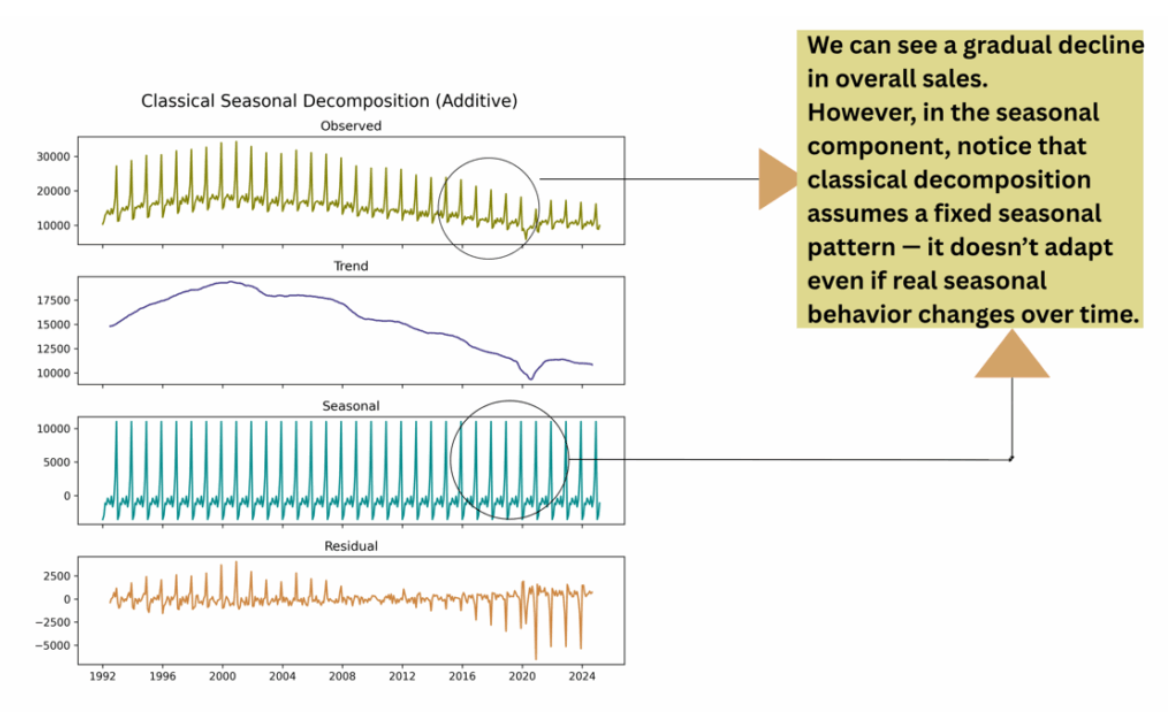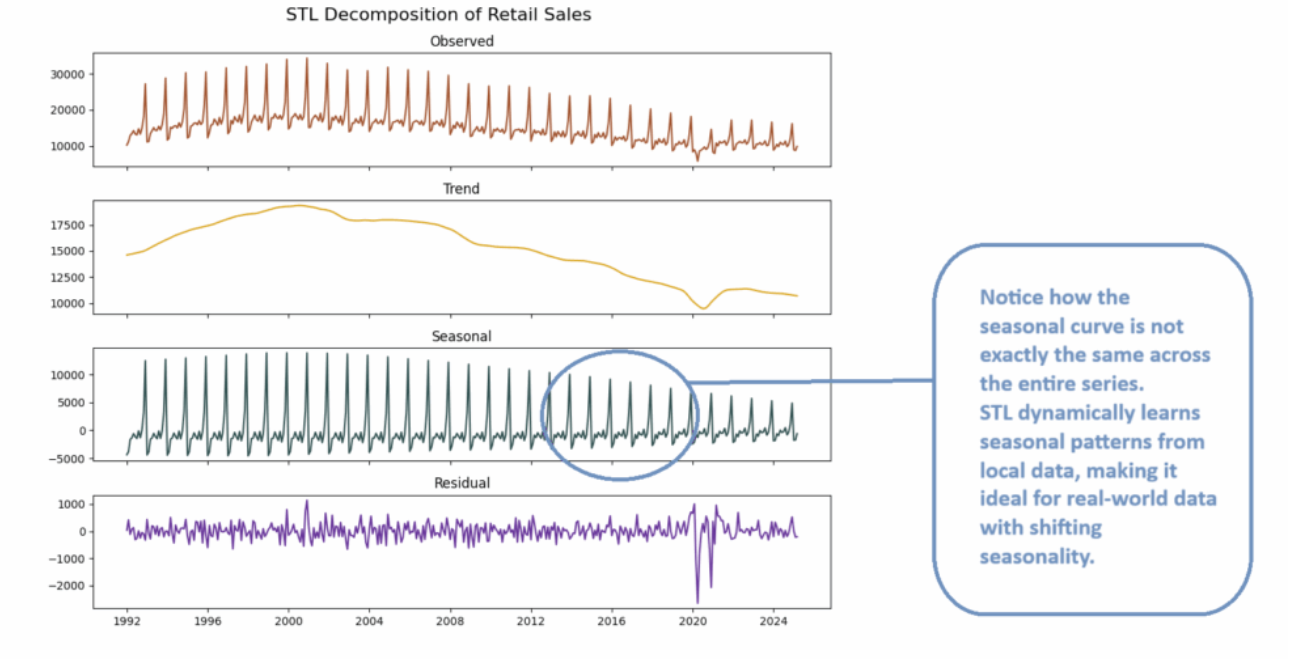When trend and seasonal patterns in a time series are messy or evolving, we use STL to extract them.
Trends may change gradually, and seasonal behaviours can vary year to year. This is why we need a more adaptable approach than classical decomposition.
from statsmodels.tsa.seasonal import STLSeasonal-Trend decomposition using LOESS
- Unlike classical decomposition, STL allows seasonal patterns to change gradually.
- Better suited for real-world, non-stationary data.
- Produces adaptive seasonality and cleaner residuals compared to classical methods.
- Useful when you want to deseasonalize but the seasonality is not straightforward.
Key ideas:
- STL identifies one-off events (e.g., COVID dip) as irregular, not trend or seasonality.
- LOESS (Locally Estimated Scatterplot Smoothing) underpins STL, refining trend and seasonal estimates iteratively.
- Initial estimates use moving averages (trend via 12-month MA, seasonality via grouped monthly averages).
- Refinement ensures the seasonal component is centered (mean = 0 per cycle), preventing contamination of the trend.
Takeaway: STL is more flexible and robust than classical decomposition, making it a preferred choice when patterns evolve over time.
Related:
Resources:
Classical

With STL
